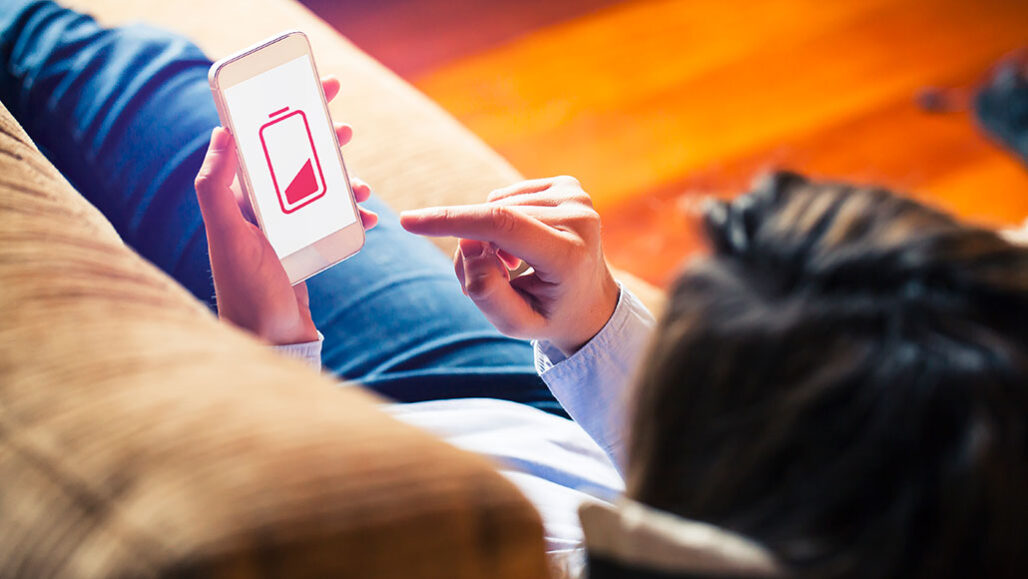Let’s learn about batteries
These small devices convert chemical energy into electrical energy

When our batteries run low, we definitely take notice.
Daviles/iStock/Getty Images Plus
How many batteries are around you right now? If you’re reading this on a smartphone or iPad, that’s one. If there’s a laptop computer nearby, that’s two. If you’re wearing a watch or FitBit, that’s three. The remote control for the TV? There’s probably two batteries there. The more you look, the more you’ll find. Batteries power objects we use every day, from hoverboards and electronic scooters to the phones in our pockets.
Batteries are devices that convert chemical energy into electrical energy. Materials inside the battery lose electrons — tiny negatively-charged particles. Those electrons flow to another material in the battery. The flow of electrons is an electric current. And that current powers your device. Batteries are so important that scientists who created rechargeable ones won a Nobel Prize.
While batteries are useful, they can also be dangerous. The fluids and pastes inside that help create the current can catch on fire — with very dangerous results. So scientists are working to make batteries that are both safe and powerful. They’re also finding new ways to make electric currents. Some devices may one day be powered by electric currents made from your sweat. Otherwise might use bacteria.
Want to know more? We’ve got some stories to get you started:
Batteries should not burst into flames: Because lithium-ion batteries power modern life, they need to store a lot of energy. Now scientists are focusing on making them safer. (4/16/2020) Readability: 8.1
Working up a sweat may one day power up a device: Tech that turns sweat into power may make for greener gadgets. A new device uses perspiration to charge a supercapacitor and run a sensor. (6/29/2020) Readability: 7.9
Germs power new paper batteries: New paper-based batteries rely on bacteria to generate electricity. These ‘papertronic’ power systems may be a safer choice for remote sites or dangerous environments. (3/3/2017) Readability: 8.3
Explore more
Explainer: How batteries and capacitors differ
This battery stretches without losing oomph
Nanowires could lead to super-long-lived battery
Shape-shifting chemical is key to new solar battery
2019 Nobel Prize in chemistry goes for pioneering lithium-ion batteries
Not all batteries have to come from the store. You can use a little spare change to build your own with this project from Science Buddies.







